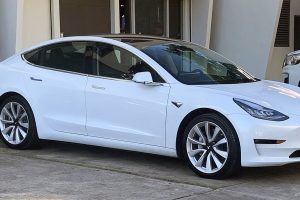- 🚗 Tesla is expanding its Actually Smart Summon (ASS) software to legacy Model S and X vehicles by the end of the fourth quarter.
- 📆 The rollout of ASS began with vehicles equipped with Hardware 3 (HW3), and a timeline has been provided for older models.
- 🕒 Owners of legacy Tesla models were curious about the updates to features like Autopark and Full Self-Driving (FSD) Supervised v12.
- 💻 Older Tesla models use Intel-based media control units that can be upgraded to newer processors such as the Ryzen in HW3 and HW4.
- ⌛ Legacy Model S and X users can expect to have advanced software updates similar to newer models, albeit with a slight delay.
Tesla has always been at the forefront of automotive technology, and its latest updates to the Smart Summon feature underline the company’s commitment to enhancing the driving experience. The Actually Smart Summon (ASS) software, which is much anticipated by Tesla enthusiasts, is finally making its way to owners of legacy Model S and X vehicles. This move highlights Tesla’s ongoing focus on improving vehicle capabilities—even for models that have been on the road for several years.
The Expansion of the Actually Smart Summon Feature
What is Actually Smart Summon?
Actually Smart Summon is an advanced feature that allows Tesla owners to remotely summon their cars from a parking spot to their location. This software not only exemplifies Tesla’s leap in autonomous driving technology but also enhances convenience for users, particularly in crowded or complex parking environments.
Timeline for Legacy Vehicles
Tesla began the ASS software rollout with vehicles equipped with Hardware 3 (HW3). The expansion to legacy Model S and X vehicles, equipped with older Hardware 2 (HW2) and Intel-based media control units, is slated for completion by the end of the fourth quarter. Current HW3 vehicles have already started receiving the update, setting a precedent for the efficiency and reliability of the technology.
Bridging the Gap Between Legacy and New Models
Despite their earlier production, legacy Model S and X owners have shown considerable interest in receiving the latest technological updates. These owners were keen on accessing features that newer models boast, like Autopark and the Full Self-Driving (FSD) Supervised version 12. Tesla has assured them that, with a bit of patience, these features will soon be available.
Hardware Updates: From MCU1 to HW4
Older Tesla models originally came with Intel-based media control units (MCU1), which were deemed adequate for initial vehicle capabilities. However, to leverage the full potential of today’s software features, owners are encouraged to upgrade to more powerful processors, such as the Ryzen in HW3 and HW4. These upgrades are significant, as they bridge technology gaps and equip legacy models with the prowess comparable to Tesla’s latest offerings.
What It Means for Legacy Model Owners
For owners of legacy Model S and X vehicles, receiving these updates means they won’t be left behind in Tesla’s technological advancements. In addition to smooth functionality and enhanced autonomous features, they gain peace of mind knowing their vehicles remain at the cutting edge despite being earlier models.
Preparing for the Update: What Owners Should Know
If you own a legacy Model S or X, here is a simple guide to ensure you’re prepared for the Actually Smart Summon update:
- Check Hardware Compatibility: Determine if your vehicle’s current hardware is compatible with the update. This might involve consulting a Tesla service center.
- Consider Processor Upgrades: If your vehicle isn’t equipped with HW3 or HW4, considering an upgrade may be worthwhile for optimal performance.
- Stay Updated on Rollout News: Follow Tesla’s announcements to know when the update will hit your vehicle model. Tesla often provides rollout news through their official channels and community forums.
Conclusion: A Unified Tesla Experience
Tesla’s initiative to bring the Actually Smart Summon feature to older models showcases its commitment to providing all its customers with an unparalleled driving experience. This move not only encourages customer loyalty but also unifies the Tesla driving community—demonstrating that technological innovation benefits all, regardless of the model year.





